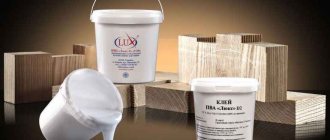Lactic acid products are among the most valuable and healthy in our diet. It is an important source of calcium necessary for healthy bones in adults and children. These products contain bacteria necessary for the normal state of intestinal microflora. Sour cream is especially versatile in our diet - as an independent product and as an additive to soups, main courses, and also as a base for sauces. But milk, unfortunately, is a nutrient medium not only for beneficial microorganisms. Dangerous microbes also successfully develop in it. Therefore, sour cream poisoning is a common occurrence.
Is it possible to be poisoned by sour cream?
A variety of microorganisms coexist in the milk environment. Intoxication is possible primarily from pathogenic microbes that can get into milk at any stage of its journey to the consumer:
- On farms where cows are kept, sanitary standards may be violated, but here milk comes into contact with milking machines, cans, and is transported in tanks. Cows may not be examined for mastitis and other inflammatory diseases. Operating personnel may have skin diseases - another source of milk contamination.
- The product is supplied to milk processing plants. Here, to produce sour cream, it is separated, separating the cream. Then starter cultures from various cultures are added to them, mixed in tanks and fermented at a certain temperature. Even people who are not privy to the intricacies of technology understand how important it is to maintain the sterility of equipment. And if it is outdated, backward, then you have to resort to manual labor, hence the increased danger of sour cream poisoning from the state of personal hygiene of the staff.
- Pathogenic flora can develop in sour cream if the seal of its packaging is broken during transportation. Microbes introduced into the product with air will cause mold or the spread of E. coli.
- If the temperature conditions for storing sour cream in stores are violated, the product may sour.
- Is it possible to be poisoned by sour cream if there are no external signs of its poor quality? It turns out that it is possible if an unscrupulous manufacturer has saturated it with preservatives or, even worse, cheap chemicals, which in themselves can poison a person.
- Sometimes in the production of sour cream the amount of yeast is abused, which can result in mild indigestion and severe poisoning.
Storing on a refrigerator shelf
You can preserve sour cream for as long as possible only by putting it in the refrigerator. In this case, it is enough to simply place the unopened product on the middle shelf of the main compartment away from the back wall. If the container has been uncorked, it is advisable to carry out the following preliminary preparations:
- Take a clean, dry (ideally pre-sterilized) jar.
- Using a well-rinsed, dry spoon, transfer the sour cream from a bag or plastic cup.
- Seal the jar with a pre-washed nylon lid and place it in storage.
Inside a glass container with a tightly closed lid, natural store-bought and homemade sour cream will not spoil for 2-3 days.
Most often, the manufacturer indicates how long the sour cream can be stored after opening the package. Often it must be consumed within 24 hours.
Even on a refrigerator shelf, a fermented milk product may turn sour on the second day after opening if:
- leave it in a plastic container or plastic bag;
- transfer to a metal container or leave a metal spoon inside the container;
- place on the refrigerator shelf without a lid;
- scoop sour cream out of a container with a dirty spoon during lunch or when preparing food;
- use a plastic bag instead of a lid.
Deadlines
In a refrigerator
The production of sour cream is regulated by GOST 31452-2012. It says that sour cream is a product obtained by fermenting cream with the addition of dairy derivatives and sourdough. The mass fraction of fat should be at least 10%, more precisely: the range for this type of product is 10-58%.
Russian enterprises make four types of sour cream:
- dietary - 10%;
- dining room - 20-25%;
- ordinary - 30-36%;
- amateur - 40%.
A product with a fat content of 40% is considered the best. Fattier ones already have an oily taste and consistency, which is why consumers do not like them.
Sour cream must be stored at a temperature of +6...+8 degrees Celsius, and its shelf life is no more than 14 days. For homemade village sour cream, this figure is 3 days.
Storage time can be increased due to preservatives in the composition.
Let's see how long it lasts for some brands of sour cream and dishes based on it:
- House in the village - 20 days;
- Prostokvashino - 25 days;
- Merry milkman - 21 days;
- sour cream - 6 hours;
- cake with sour cream - 6 hours (if no preservatives were used);
- sour cream sauces - 2 hours from the moment of preparation.
The data is valid for closed store packaging - after opening the time is reduced to three days.
It is not recommended to keep fermented milk products in open form or in plastic consumer containers. After opening the package, you need to put it in a glass or ceramic container, seal it with a lid and put it in the refrigerator.
In the freezer
Fermented milk products can be deep frozen. For example, cottage cheese easily tolerates freezing.
This way, their storage time will increase significantly - up to about six months, but the taste and texture will no longer be the same, and the amount of useful microelements will decrease. You need to freeze sour milk in glass or ceramics. For convenience, indicate the date of freezing of the dairy product on the glass container with a permanent marker to avoid use after the expiration date.
Without refrigerator
If there is no refrigerator, you can keep the sour cream suitable for consumption for no more than 24 hours. To do this, you need to put it in a glass plate, place it in a vessel with cold water and cover it with a cloth, dipping the ends into the water.
Under normal room conditions, products can begin to deteriorate within three hours. The first sign will be the separation of serum. If you notice such a process, you must use the product as soon as possible.
In a vacuum container
Vacuum packaging can certainly extend the life of food by 3-5 times. This is achieved due to the lack of oxygen inside, which does not allow microorganisms to multiply.
Shelf life and shelf life
Implementation period
When a product says “sell by date”, these dates are for sellers only and not for buyers.
. They tell stores how long they should keep products on shelves and are not related to the expiration date of the products.
The sell-by date does not indicate the time at which a product will begin to spoil or become unsafe for consumption. But it does give clues to how long it will last at home if stored properly. If a product is still on the shelves and has not been sold, the store must remove it from the shelves.
How long do store-bought and home-made ones last?
The shelf life of sour cream is counted from the moment the production process ends.
And it is indicated by the manufacturer on the packaging.
Sour cream should not remain at the manufacturing plant for more than 36 hours.
The total shelf life is no more than 72 hours at a temperature of 4±2 degrees .
If the sour cream is homemade and made according to a classic grandmother’s recipe, that is, separated cream is whipped to a certain consistency without adding lactic acid organisms, then its shelf life is the same as that of butter .
At a temperature of 3±2 degrees - no more than 10 days.
If it is made using sour cream , then its storage conditions are the same as for store-bought ones.
The shelf life of sour cream from the Prostokvashino line is 30 days.
A long shelf life indicates that the composition may contain various preservatives or the product is made from vegetable fats using thickeners .
How to store?
If stored improperly , the acidity of the product increases, whey is separated, the quality deteriorates, and ultimately leads to spoilage .
Do not leave sour cream uncovered.
Airing occurs, dust gets in, which contributes to rapid deterioration.
You should also not leave cutlery, especially metal, in sour cream.
You cannot freeze sour cream , as it will lose its homogeneous consistency, its taste and most of its beneficial properties will be lost.
In stores, sour cream should be sold in refrigerated counters.
If the retail outlet does not have refrigeration equipment for storing fermented milk products, then such goods should be delivered for 2-3 hours of sale.
How to protect yourself from sour cream poisoning
To avoid severe food poisoning, you should choose dairy products carefully. Even if you buy homemade milk, cottage cheese and sour cream from private traders on the market, do not be lazy to check them first: buy a liter of milk and keep it warm at home. If during this time it has not turned into sour milk, it means that antibiotics were added to it to protect it from souring. Is it worth buying other products from such an owner?
Be even more careful when shopping at the store. Pay attention to the following indicators:
- Best before date. If the manufacturer claims that the product can be stored for more than four days, it definitely contains preservatives. Of course, avoid expired products.
- Read the composition of sour cream carefully. In a quality product it is short and includes cream and sourdough. But if preservatives, thickeners, and dyes are listed, this is not sour cream, but a surrogate of technical oil with the addition of chemical components.
- Check the integrity of the packaging. If it is broken, this is a direct route to any infection. Sour cream in swollen packaging, crumpled packs and glasses should also raise suspicion.
- If the external condition is normal, but when opening the package the sour cream turns out to be separated into liquid and sediment, has an unpleasant odor, a changed color, or an unusual consistency - it is better to stop using it.
Attention to the quality of dairy products cannot be excessive - this will preserve the health of you and your loved ones, and a high-quality product will bring the expected benefits from it. And remember: when the first symptoms of sour cream poisoning appear, treatment should be followed immediately.
Expiring products
1. Milk
The expiration date on a milk carton does not always indicate the date it will go bad. Usually the date is given because it is influenced by many factors. It loses vitamins or takes on an unpleasant taste when exposed to light, which is why it is often sold in cardboard or opaque plastic packaging.
If you store pasteurized milk at a temperature of 2-3 degrees Celsius, it will remain fresh for another 2-5 days
after the expiration date.
Use smell when deciding whether milk is safe to drink. If you notice a sour smell or taste, or it has turned a blue-green color, it's time to throw it away.
2. Meat
Fresh meat should be eaten within 1-2 days after purchase
. Home refrigerators are generally not cold enough to keep meat fresh for more than 2 days.
If the meat has darkened or turned green, become slippery, sticky or dry, this also indicates spoilage, just like a sour smell.
But if you freeze meat
, it will be stored much longer: frozen minced meat -
up to 3 months
, pork -
up to 6 months
, beef and chicken -
up to 9-12 months
.










